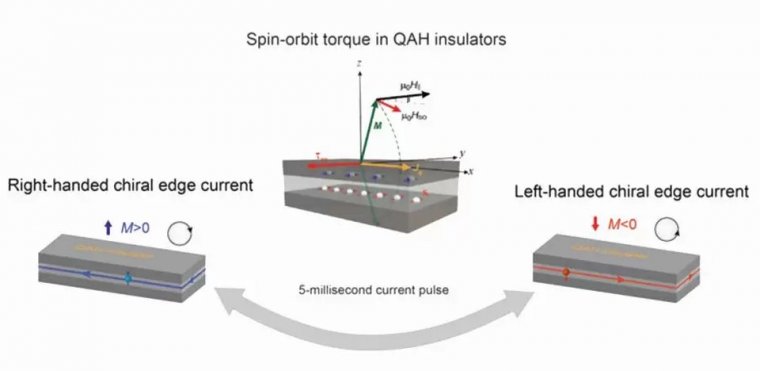| News / Tech News |
Electrical control of quantum phenomenon could improve future electronic devices
A new electrical method to change the direction of electron flow in some quantum materials could have implications for the development of next-generation electronic devices and quantum computers.

A new method to change the direction of electron flow offers improvements for future electronic devices. Credit: Chang Lab/Penn State
Researchers from Penn Statedeveloped and demonstrated the method in materials that exhibit the quantum anomalous Hall (QAH) effect — a phenomenon in which the flow of electrons along the edge of a material does not lose energy.
"As electronic devices get smaller and computational demands get larger, it is increasingly important to find ways to improve the efficiency of information transfer, which includes the control of electron flow," said Penn State scientist Cui-Zu Chang.
The researchers fabricated a QAH insulator with specific, optimized properties.
They found that applying a five-millisecond-current pulse to the QAH insulator impacts the internal magnetism of the material and causes the electrons to change directions, an ability critical for optimizing information transfer, storage and retrieval in quantum technologies.
"The previous method to switch the direction of electron flow relied on an external magnet to alter the material's magnetism, but using magnets in electronic devices is not ideal," said Penn State scientist Chao-Xing Liu.
"Bulky magnets are not practical for small devices like smartphones, and an electronic switch is typically much faster than a magnetic switch. We found a convenient electronic method to change the direction of electron flow."
According to the researchers, this shift from magnetic to electronic control in quantum materials is similar to a shift that has occurred in traditional memory storage.
While the storage of information on original hard drives and floppy disks involved the use of magnets to create a magnetic field and write data, newer "flash memory" such as that used in USB drives, solid-state hard drives and smartphones is written electronically.
The team is currently exploring how to pause electrons on their route, to essentially turn the system on and off. The researchers are also pursuing how to demonstrate the QAH effect at higher temperatures.
"This effect, as well as current requirements for quantum computers and superconductors, requires very low temperatures near absolute zero," Chang said. "Our long-term goal is to replicate the QAH effect at more technologically relevant temperatures." (U.S. National Science Foundation)
YOU MAY ALSO LIKE





